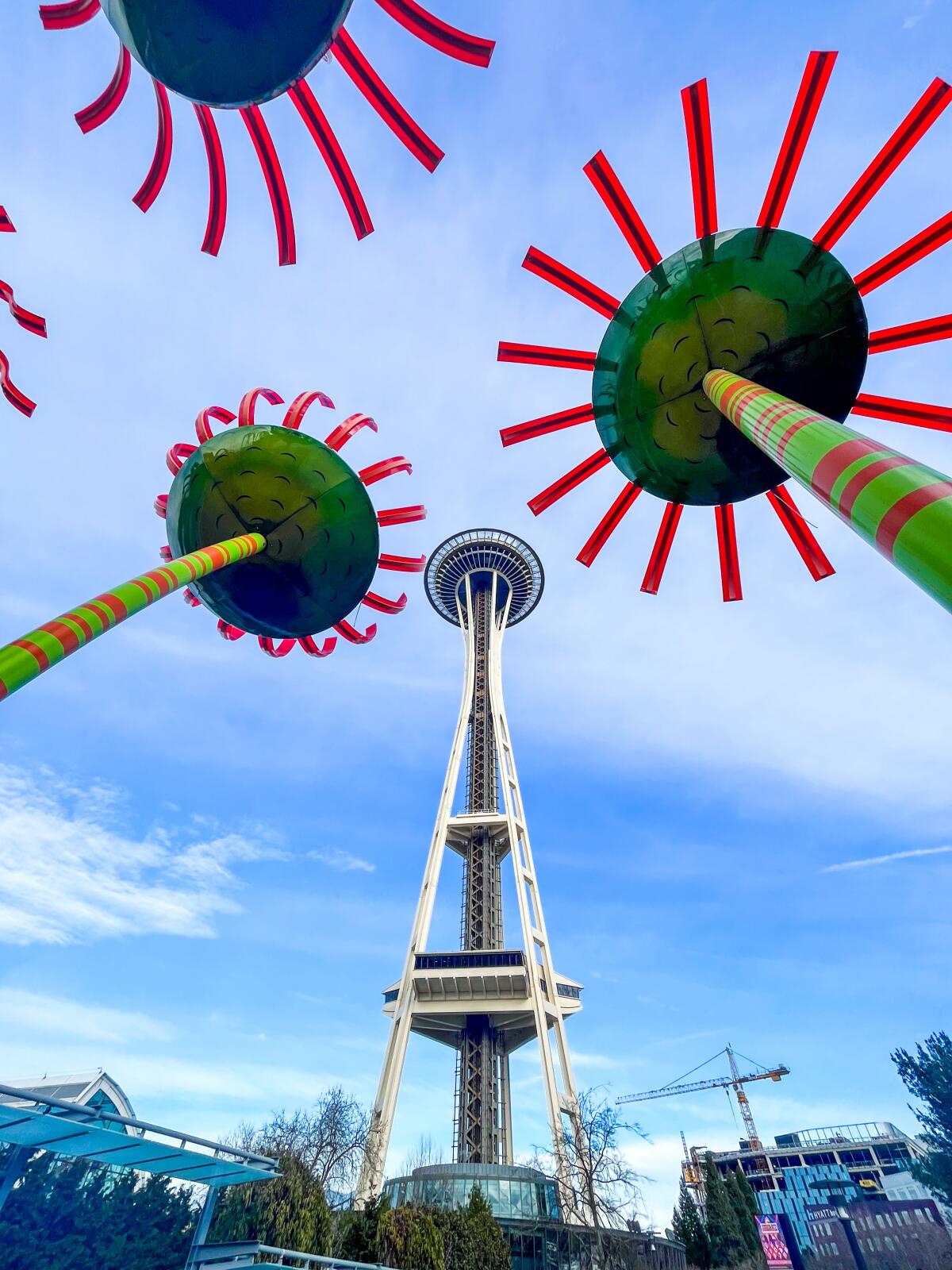
15 sensational things to do in Seattle (like soak in a floating hot tub boat!)
- Share via
Sure, L.A.’s gotten a little wet this winter. But Seattle gets wetter. In fact, it has water the way we have celebrities: in extravagant, inspiring, sometimes alarming quantities.
And that may help explain why visiting Washington’s largest city can be so rewarding for a northbound traveler. Lots of greenery, lots of lakes and seascapes, lots of coffeehouses and welcoming indoor spots. Also free bananas (as you’ll discover below).
Planning your weekend?
Stay up to date on the best things to do, see and eat in L.A.
This guide is designed to help a newcomer wade into Seattle, with new approaches to well-known landmarks like the Space Needle (which is now old enough to join AARP) and Chihuly Garden and Glass (which features more accordions than you’d expect).
I’ve also thrown in tips on how to sleep in a tree, pilot your own floating hot tub, meet two trolls and taste a bison taco.
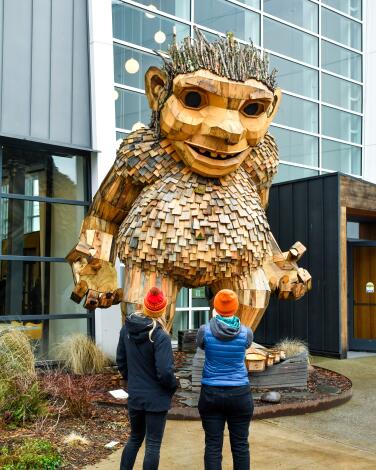
Prowl Ballard's locks, shops and troll
I strolled the avenue at length, ogled the throwback murals in Hattie’s Hat (a diner and bar established in 1904), admired the equally old flatiron building that holds McLeod’s Scottish pub and wished I could hear the Yonder Mountain String Band at the Tractor Tavern that night — but it was sold out. The Tractor Tavern has offered a full schedule of live music shows, heavy on the Americana, for 30 years.
If you’re into engineering, the neighborhood highlight surely is Ballard Locks, an enormous 1917 maritime landmark that allows boats (and salmon) to transit between the freshwater of Salmon Bay and the saltwater of the Puget Sound. The site includes a fish ladder observation room where, in summer months, you can peer through an underwater window at salmon struggling against the current.
That’s still not all. You can stroll the beach and wetlands at nearby Golden Gardens Park, and bike or walk on the Burke-Gilman Trail, which runs 19 miles between Golden Gardens and Bothell. Or you can walk 300 yards up Market Street from the locks to the National Nordic Museum, whose building opened in 2018. Like so much Danish design, it’s minimalist and elegant, a two-story building devoted to the cultures that many Seattle immigrants brought with them from homelands including Denmark, Finland, Iceland, Norway, Sweden and Greenland.
Bonus tip: In front of the National Nordic Museum you will find a 14-foot-tall troll with a shingled trunk, a.k.a. Frankie Feetsplinter. Everyone’s favorite troll in Seattle is supposed to be the one under the bridge in the nearby Fremont area, but Ballard’s is friendlier and made of recycled wood, not concrete. Frankie is one of six trolls scattered around the Pacific Northwest by Danish artist Thomas Dambo.
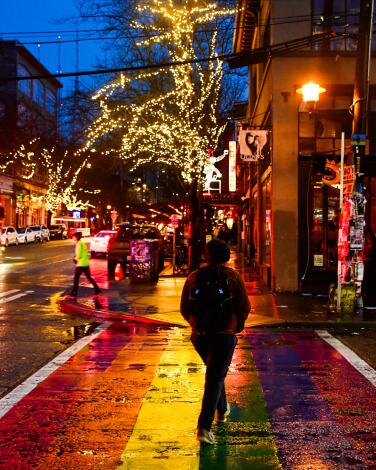
Read Elliott Bay's literature and Capitol Hill's history
Once you’ve browsed the bookshop’s many aisles, the hill’s rainbow crosswalks might take you to wacky bars like Unicorn and Narwhal on Pike Street. Or the grass of Cal Anderson Park. Or the Seattle Asian Art Museum in Volunteer Park.
But if you notice a few more disheveled folks on the sidewalk than in most other areas, and a bit more graffiti, that might be a clue to what happened here in June 2020. As public gatherings lingered in the aftermath of Black Lives Matter protests, the Seattle Police Department chose to vacate its East Precinct station and demonstrators occupied a chunk of Capitol Hill. An encampment grew in Cal Anderson Park as an unpoliced “autonomous zone” took root. After initial comparisons to a “Burning Man” gathering, chaos snowballed, including four shootings and at least two deaths. The police reclaimed their station that July 1, but fallout lasted months, including lawsuits against the city, the police chief’s resignation and the revelation that crucial texts among the mayor and others had been mysteriously deleted.
It would be a mistake to avoid the vitality of Capitol Hill because of that summer. But it is something to think about as you walk past the bold colors and revelry on Pine Street, Pike Street and 10th Avenue. Sometimes reading a neighborhood is trickier than reading a book.
Bonus tip: In the back of Elliott Bay Books, you’ll find an automatic short-story dispenser and an Oddfellows satellite operations called Little Oddfellows. It has chairs and tables and offers coffee, tea, wine, sandwiches, salads and — no bookstore should be without this — Rainier Tall Boy beers for $5.
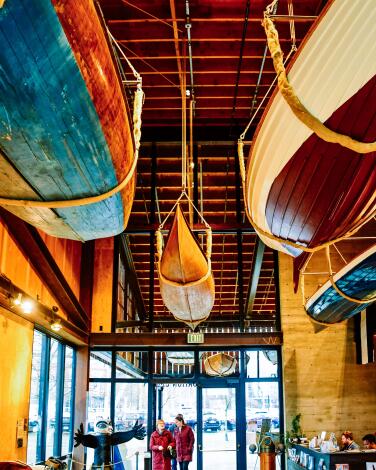
Row, row, row at the Center for Wooden Boats
First about the boats for nothing at the Center for Wooden Boats: They’re rowboats, also known as peapods because of their shape. Under the center’s Public Peapod Program, you can borrow one for up to an hour from 11 a.m. to 7 p.m. Wednesday to Sunday, advance reservations required.
The center also manages a fleet of rentals, from kayaks to large sailboats, and runs charter cruises.
Founded in 1976, the center now includes a dockside complex with an education building (completed in 2018) holding several boats on display. It’s free, open Wednesday through Sunday except for three down weeks in winter. There’s also a workshop, a roster of courses in how to build and navigate boats and further facilities on Camano Island.
“That’s the core of the center, getting people out on the water,” said Jonathan Tune, a volunteer at the front desk. “Even on a miserable day, it’s pretty fun.”
Bonus tip: Before you leave the southern end of Lake Union, also check out MOHAI, Seattle’s Museum of History & Industry. It’s housed in a big, white building (once a naval reserve armory) at water’s edge and includes multiple exhibits (including Boeing’s first commercial plane, from 1919), a cafe and a store. Through June 2, one exhibit details the history of rowing in Seattle, including the University of Washington team’s 1936 Olympics win, which inspired the 2023 film “The Boys in the Boat.” Adult admission: $22.
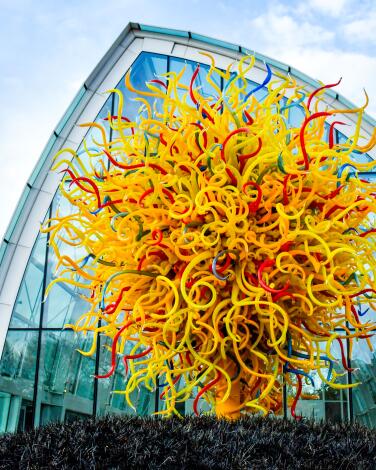
Gawk at Chihuly Garden and Glass
Mission accomplished. These days, you’ll find glass art spread among eight rooms at Chihuly Garden and Glass, including a translucent, 40-foot-high greenhouse and a walled garden where the colors and shapes harmonize and contrast with plants and trees.
Even many visitors who arrive skeptical (I was one) are knocked out by the colors, shapes and glass-blowing demonstrations.
Chihuly, born in Tacoma in 1941, taught at the Rhode Island School of Design before emerging as an international artist in the 1970s. (He lives in Seattle.) The Chihuly Garden and Glass space is open daily; adult admission, $35.
Bonus tip: Don’t miss Chihuly’s collections. In early 2023, the Chihuly team replaced its on-site restaurant with a bar (which also serves food) that is decorated with the artist’s sketches and two dozen of his many collections.
They’re hung on the walls and inset into tabletops: tin toys, pocket knives, fishing reels, electric irons, alarm clocks, shaving brushes, Mexican ashtrays and, on the ceiling, accordions.
“There are 83 of them here,” bartender Jojo Buharaksa told me, pointing up. “And there are more in his studio. Way more.”
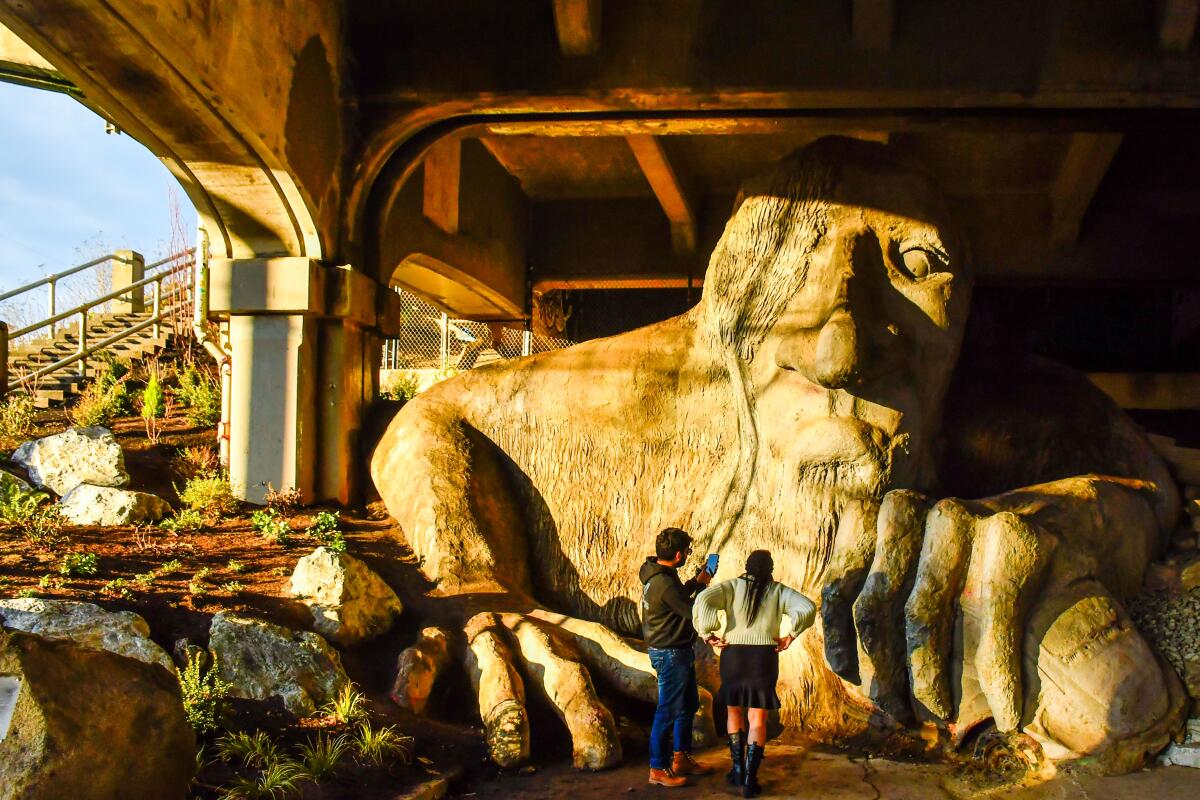
Greet the Fremont Troll
Fremont’s other charms include a mix of 20th-century counterculture and 21st-century tech companies— plenty of restaurants and bars and a big statue of Lenin (from Slovakia; long story) at Fremont Place North and North 36th Street. Also close at hand: several breweries, the Theo chocolate factory and the Fremont Sunday Market, a year-round flea market.
If you’re not compelled to browse the storefront vinyl bins at Jive Time Records or the used and new volumes in Ophelia’s Books, the guitars, harps and dulcimers of Dusty Strings may strike a chord. In fact, you can count on a dulcimer alarm to ring out when you open the door.
Bonus tip: The troll is 18 feet tall, has a rebar skeleton and was built in 1990 as a project to discourage people from dumping trash. Sculptor Steve Badanes, who designed and built the troll with Will Martin, Ross Whitehead and Donna Walter, has said he was inspired by a Norwegian fairy tale.
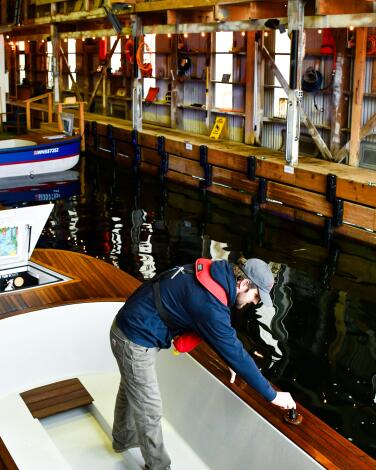
Soak in a floating hot tub boat
Naturally, this has become a thing among Seattle folks. You recruit a group of six and a spend a couple hours floating on Lake Union, heedless of the lake and air temperature, in a 104-degree tub/boat.
You’ll need to choose between Hot Tub Boats, originators of the concept in 2011, and Lake Union Hot Tub Boats, which came along in 2019. Either way, you’ll be out on Lake Union for up to two hours, spending $400 and up for up to six people.
Some people may lean toward Lake Union Hot Tub Boats because that company allows alcohol and features wood-burning stoves on its boats. But I wanted to see the company that started this, so I went to Hot Tub Boats headquarters on Lake Union.
The company, founded by Adam Karpenske, makes its own boats, which are 16 feet long and about about six feet wide. The hot tubs inside them are eight feet long and about four feet wide. A drybox holds phones and water-vulnerable valuables while a water-resistant Bluetooth speaker delivers tunes. Boats are emptied and washed between customers. Children are allowed with life jackets.
“In the summer, we are bombarded with people from out of town,” Hot Tub Boats manager Jared Smith told me. “A lot of people, just walking in, are mind-blown.”
Bonus tip: You steer the Hot tub Boats with a simple joystick. The decks are teak. LED lights illuminate on the boat and in the tub.
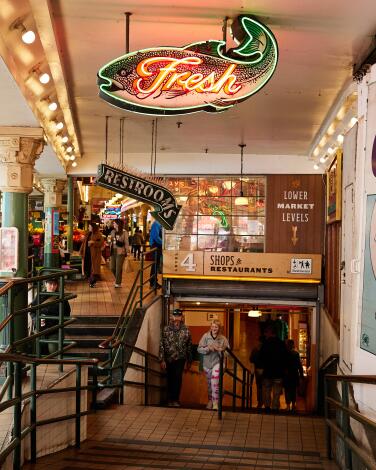
See fish fly and buskers jam at Pike Place Market
At risk of destruction 50 years ago, the market has grown into one of the city’s top tourist attractions, alive with more than 220 vendors, artisans and performers on 9 acres. The Pike Place Fish mongers, renowned for their hollering and flinging of salmon and halibut, are a crowd favorite. (Newbies, beware the booby-trapped monkfish.)
Browsing stalls, you may be offered a Chilean nectarine at Sosio Produce or a card trick at the magic shop. Downstairs, there’s an alley plastered with bubble gum. At 1912 Pike Place, caffeine seekers line up for coffee from the original Starbucks (it opened in 1971). Meanwhile, a massive waterfront redevelopment project continues along Alaskan Way.
What you won’t notice in the market, at first, is my favorite restaurant there. That’s the Pink Door, founded by Jackie Roberts in 1981. It hides unsigned behind a pink door on Post Alley yet has room for 500 or more diners. Its Italian menu makes the most of local seafood. Tarot readers, cabaret singers and trapeze artists perform. (For the aerial performances, try a Tuesday or Saturday night.)
Bonus tip: That piano player at Pike Place and Pine Street? His name is Jonny Hahn and he’s been working that corner for 37 years.
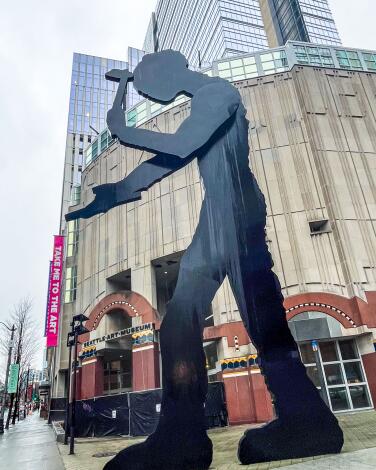
See the art behind Seattle's big hammering man
You can’t miss the kinetic sculpture out front — Jonathan Borofsky’s 48-foot-tall “Hammering Man,” which may remind you of Borofsky’s “Molecule Man” in Little Tokyo, DTLA. The museum is closed on Monday and Tuesday.
Through Aug. 4, SAM will feature an Alexander Calder exhibition that’s startling in its variety, from the massive dangling metal works to the delicate miniatures affixed to the wall like rare butterflies. All 45 works are owned by the museum.
And then, coming June 21 and staying through Sept. 2, there’s “Poke in the Eye: Art of the West Coast Counterculture,” which looks closely at the 1960s and ’70s.
One caveat: Adult admission to SAM is $29.99 to $32.99, which makes it one of the priciest art museums in the West.
Bonus tip: SAM also runs the Seattle Asian Art Museum in Volunteer Park and the 9-acre Olympic Sculpture Park, a great (and free) waterfront destination on a sunny day, a mile northwest of the museum.
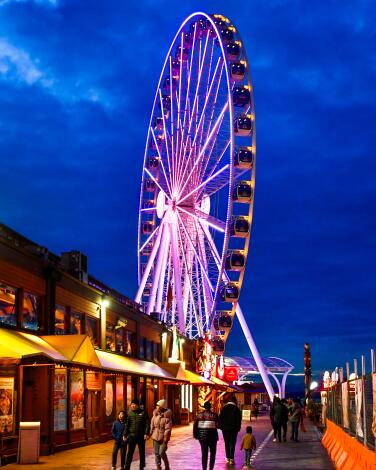
Spin on Seattle's Great Wheel
Still, this wheel gives you Seattle’s skyline and Elliott Bay from a bird’s-eye angle, and it takes you higher than the wheel on the Santa Monica Pier or the one on San Francisco’s Fisherman’s Wharf. Cost is $18 per adult.
Next to the wheel is “Wings Over Washington,” a 15-minute cinema presentation that uses drone video, sound, scents and mist to evoke the state’s islands, forests, vineyards and urban landscapes. There are motion effects too, which is why you’ll be strapped into your seat. Cost is $19 per adult.
Bonus tip: There’s another option on the waterfront that takes more time and less money: Down at Pier 52, you can catch a 35-minute Washington State Ferry ride to pastoral Bainbridge Island — just $9.85 per adult round trip.
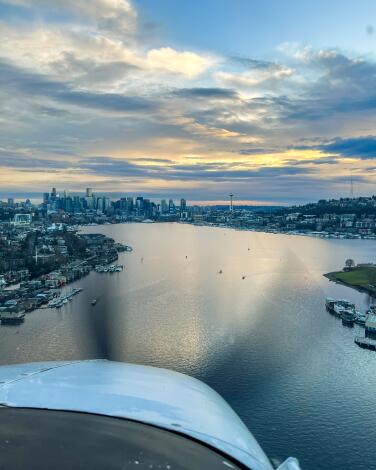
Soar and swoop in a Seattle seaplane
And if you sign on with one of the two seaplane companies that fly from Lake Union, a spectacular series of sights will follow, beginning with the Cascade Mountains to the east, Puget Sound and the Olympic Mountains to the west. On the afternoon flight I took with Seattle Seaplanes, our 20-minute, 30-mile journey included the University of Washington campus, the lakeside estates of Bill Gates’ neighborhood, the lonely West Point lighthouse, the active machinery of Ballard Locks and the idle machinery of Gasworks Park. From about 1,000 feet up, the wake of a lone boat on Lake Washington looked as elegant as a calligrapher’s script. The views get doubly interesting when the plane tilts to turn.
Pilot Yvette Meadows gave us a good look at the waterfront and the Space Needle too before our gentle return to the water. We flew in a five-passenger Cessna 206 (and yes, before signing on, I checked that the company had a clean safety record). The cost was $136.
The other company doing sightseeing flights from Lake Union is Kenmore Air, which advertises 30-minute flights for $119.
Bonus tip: You could fly farther. Seattle Seaplanes and Kenmore both do longer sightseeing flights and charters, and Kenmore offers scheduled flights to the San Juan Islands and Victoria, British Columbia.
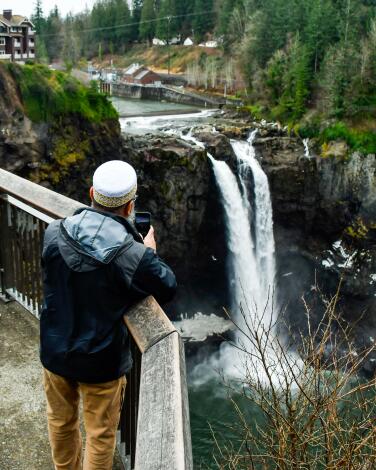
Hike near Snoqualmie Falls
On sunny days, there are rainbows. In winter, the scene is draped with ice. Either way, the scene is powerful enough that the Snoqualmie tribe considers this the site of creation.
Millenniums later, this landscape hit director David Lynch hard too. He chose the falls for the ominous opening credits of the 1990s television series “Twin Peaks.”
The falls are about 30 minutes outside Seattle. You can view them from a two-acre park neighbored by parking and the Salish Lodge. From the upper observation decks, a 0.7-mile paved path leads down to a boardwalk, passing hydroelectric equipment on the way to a perch that looks up the Snoqualmie River toward the falls.
Bonus tip: Don’t ignore the Salish Lodge, which has been perched beside the falls since 1919.
Nowadays, the lodge has about 85 guest rooms (typically $300 and up in spring and summer), a restaurant and spa, all owned by the Snoqualmie Tribe. While management is redoing the dining room in 2024, meals have moved to the former Attic Lounge. The day I lunched there, the clam chowder ($11) was tasty.
And the biscuits. By tradition, servers bring the biscuits as a free side dish, with honey from the lodge’s own hives. Then, with ladle raised overhead, the server pours “honey from heaven” onto your plate — your own waterfall, sweet and spreadable on those biscuits.
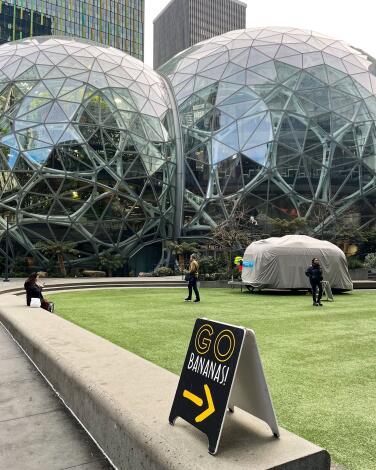
See the spheres of Amazonia (a.k.a. South Lake Union)
Since making South Lake Union its headquarters about 15 years ago, Amazon has put up dozens of buildings and brought in about 55,000 workers. Many companies and nonprofits have followed, including the Museum of History & Industry at the edge of the lake.
The company-town vibe is heavy, from the blue-and-white umbrellas when it rains (Amazon supplies them) to the reduced traffic on Mondays and Fridays (when Amazonians are allowed to work from home).
At 7th Avenue and Lenora Street, you’ll want a look at Amazon’s architecturally striking Spheres, which hold offices along with an estimated 40,000 plants, imported from more than 30 countries. (The offices, generally private, are open for free public tours on the first and third Saturdays of each month).
And you can grab a free banana, or a whole bunch, from the Amazon-sponsored stand next to the spheres.
The giveaways go back to 2015, when Amazon was looking to win over its new neighbors. The best estimate is that the banistas have given away more than 2 million of them, with no end in sight.
Outdoorsy shoppers in the area might head for the REI flagship store and its 65-foot climbing wall. Indoorsy shoppers might head for the compact flagship retail shop of Subpop Records, the Seattle music label whose acts have included Nirvana, Mudhoney, Soundgarden and Sleater-Kinney.
And I liked Wilmott’s Ghost, an Italian restaurant in the Spheres (but open to all) whose greenery makes it feel like the offspring of a space station and a greenhouse. Just snacking? Try the focaccia ($9).

Zip to the top of the Space Needle
Is it tired? A little. But the family-owned attraction got a renovation in 2018, and there’s no better place to see the city and Puget Sound from 520 feet up, especially around sunset when the mountains are clear. The observation level rotates.
Adult admission is $35 to $39. (Or you can get a combined entry with the Chihuly Garden and Glass for $59.50. That’s $20 less than they cost separately.) While aloft, you can get a drink or bar food in the Loupe Lounge.
The ride to the top takes 43 seconds, and at least one elevator operator (his name plate said Isaac) has developed a brilliant deadpan spiel lasting exactly that long.
Bonus tip: There’s good food, and good browsing, waiting near the Needle’s base. Try the dumplings at Sichuan-inspired Tyger Tyger. Or for a cup of coffee, dip into the studio and hangout area of public radio station KEXP. There you can get Caffe Vita coffee or browse vintage vinyl at the tiny Light in the Attic Record Shop. The Seattle Center’s other attractions include the Museum of Pop Culture (in a Frank Gehry building), the Seattle Center Monorail, the Climate Pledge Arena and the Pacific Science Center.
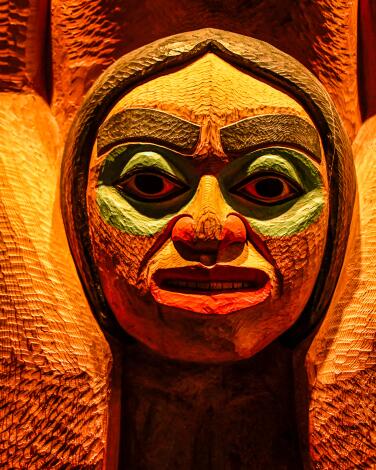
Study Huskies on the University of Washington campus
The Burke Museum of Natural History and Culture, a sleek 2019 building at the northwestern corner of the campus, shows and explains thousands of artifacts, along with some 21st century curatorial rethinking. One display of carved cedar logs, commissioned from Tlingit carvers Nathan and Stephen Jackson, has replaced a pair of totem posts that were stolen from the Tlingit in 1899. (The museum returned them in 2001.) Also, there are dinosaur skeletons on the third floor. Adult admission: $22.
If you get hungry, turn to Off the Rez, the museum’s Native-owned order-at-the-counter cafe, where I had a hearty, juicy braised bison Indian taco ($7.80).
From the Burke, head to monumental Red Square (officially Central Plaza) and the Quad, where cherry trees bloom in spring. You can’t miss the neo-Gothic Suzzallo Library, which has a great origin story. The university president who approved it was fired for overspending in 1927, while it was still under construction. But the library (closed Saturday) is named after him anyway.
Bonus tip: The Henry Art Gallery, known for contemporary exhibitions, is steps from Red Square. If the day is gray, head for the gallery’s “Light Reign” installation by James Turrell. The artwork is an oval room with a blue ceiling that’s eerily like a cloudless sky. Suggested adult admission is $20.
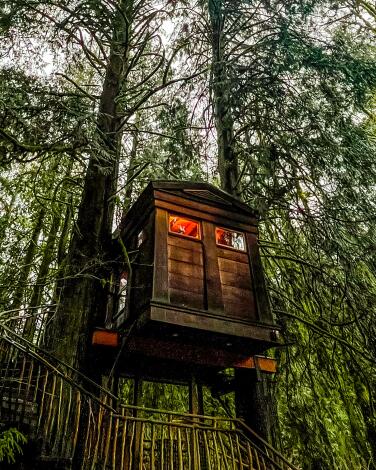
Climb into a treehouse outside Seattle and sleep there
It’s a treehouse hotel, with seven elevated perches (and one ground-level bedroom) woven into the greenery. Guests, including many wedding parties, wake up surrounded by clever carpentry, the burbling river and birdsong.
Treehouse builder and author Pete Nelson bought the property with his wife, Judy Nelson, in 2004. Since then, the Nelsons and their team have built seven treehouses on 4 acres with an event space, lodge and pond. If you’ve heard of the Nelsons and treehouses before, it may be because Pete hosted 100 episodes of the series “Treehouse Masters” on Animal Planet from 2013 to 2018, building and touring tree structures worldwide.
Though weekend wedding business is brisk, that still leaves plenty of weekday nights for the rest of us. The treehouses, each a unique design, are priced at $325 to $625 a night, usually with a two-night minimum. (For a one-night stay, try a Sunday.)
Five have their own water flush toilets and sinks. One has a composting toilet. And one, called Bonbibi, relies on shared access to the bathhouse’s toilets and showers. That’s where I slept. There was a 40-step rain-spattered journey in the wee hours, but I survived.
Still, the room was well-heated and watertight, the setting was spectacular, the sound of the river was calming and the photo possibilities were laughably rich.
If you can’t spend an overnight, you can book a tour.
Bonus tip: Breakfast is included, but there’s no restaurant on site, and once you check in, you won’t want to leave. So if you’re there in warm weather, try a picnic dinner by the river.
Sign up for This Evening's Big Stories
Catch up on the day with the 7 biggest L.A. Times stories in your inbox every weekday evening.
You may occasionally receive promotional content from the Los Angeles Times.



